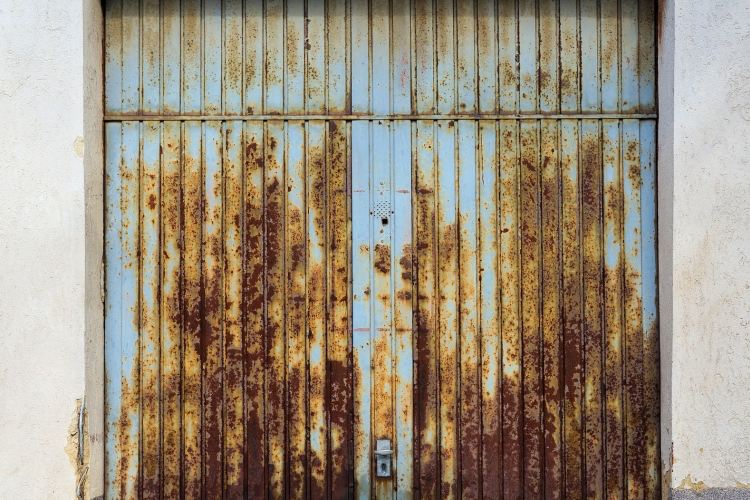How to Remove Garage Door Rust and Prevent Future Rusting

Even with the best of intentions and a well-thought-out maintenance plan, you could still wake up one day and discover that rust has begun to attack the surface of your garage door. Rust on a garage door will most often take hold where there is a weak spot in the door's defenses: at the bottom of the door. The bottom of your garage door is exposed to moisture throughout the colder months of the year and if the seal attached to it is damaged or becomes completely detached, it will be even more vulnerable to rust. However, there is no need to panic if you have just discovered a patch of oxidation on your overhead door because our Loveland garage door repair team has prepared a handy guide on how to eliminate it quickly and easily.
How to Remove Rust from Your Overhead Garage Door and Keep It Away
If you like to take care of most home maintenance tasks yourself, you will not find it difficult to deal with a little rust on your garage door. If, on the other hand, you really do not enjoy DIY and you always leave maintenance work to the professionals whenever possible, you are welcome to call and speak to our garage door repair team right now. We offer competitively priced services to residential and commercial customers in Loveland and the surrounding area, including repair, maintenance and new garage door installation.
Assuming that you’d like to take care of the problem yourself, all you need to do is follow the steps outlined below and you’ll soon have everything under control.
- Remove All Existing Rust – The first thing you will need to do is to remove all visible traces of rust that you find on your garage door. The fastest and most effective way to do this is to soak a cloth in white vinegar then use it to rub down all surfaces where you can see signs of rust. The white vinegar will react with the rust, making it much easier to remove. Once you have wiped all of the affected areas, go over them again with a steel-wool pad. The rust should come off quite easily after it has reacted with the white vinegar but make sure you go over each area very carefully. It is vital to ensure that no rust is missed because it can quickly start to spread again if it is not completely removed.
- Fill Any Holes That You Uncover – If the rust on your door has been there for some time, it is quite possible that, in certain places, it will have eaten away a considerable amount of metal. Should you uncover any holes when removing rust from the surface of your garage door, you will need to fill them. You can do this with any good quality bonding agent or auto body filler that has been designed to be used on metal surfaces. Once you have filled all of the holes, you will need to leave the filler to dry. How long this takes will depend on the make and type of filler or bonding agent that you use but it should come with full instructions that include recommended drying/setting times.
- Sand the Whole Door – When the filler that you used to fill the holes has set, you will then need to sand down the whole door. You need to sand the spots that you filled so they are smooth and level and you need to sand the rest of the door to prepare it for painting. By roughing up the surface (or keying it in as some people call this process), you will ensure that the paint adheres properly when you refinish it. If any of the holes that you filled are in the side of the door rather than the front, sanding them down will also help you to avoid having to deal with a stuck garage door at some point in the future.
- Wash Thoroughly – Any dirt or dust particles on the door will make it more difficult for paint to adhere to the surface and will also result in an uneven finish. For this reason, we recommend washing the door thoroughly after you have finished sanding it. You may wash it with warm water and soap but for best results, you might like to try using a commercially prepared tri-sodium phosphate cleaning solution. After washing, rinse the soapy water or cleaning solution off with your garden hose and leave to dry.
- Repaint the Door – Now that you have a clean, dry door, with no rust and all holes filled and sanded, you are ready for the final stage: repainting. Make sure that you use rust-resistant primer and paint so you don’t have to repeat the whole process in a couple of years’ time!
If you followed all of the above steps carefully, you should now have a gleaming, freshly painted garage door. We suggest that you also clean and lubricate the moving parts in your garage door opener mechanism after you have finished painting the door, just in case any dust or paint has made its way into the components.
If your garage door has rusted beyond repair or you’d simply prefer to install a new, rustproof model that won’t require very much in the way of future maintenance, contact our Loveland garage door installation team now.
